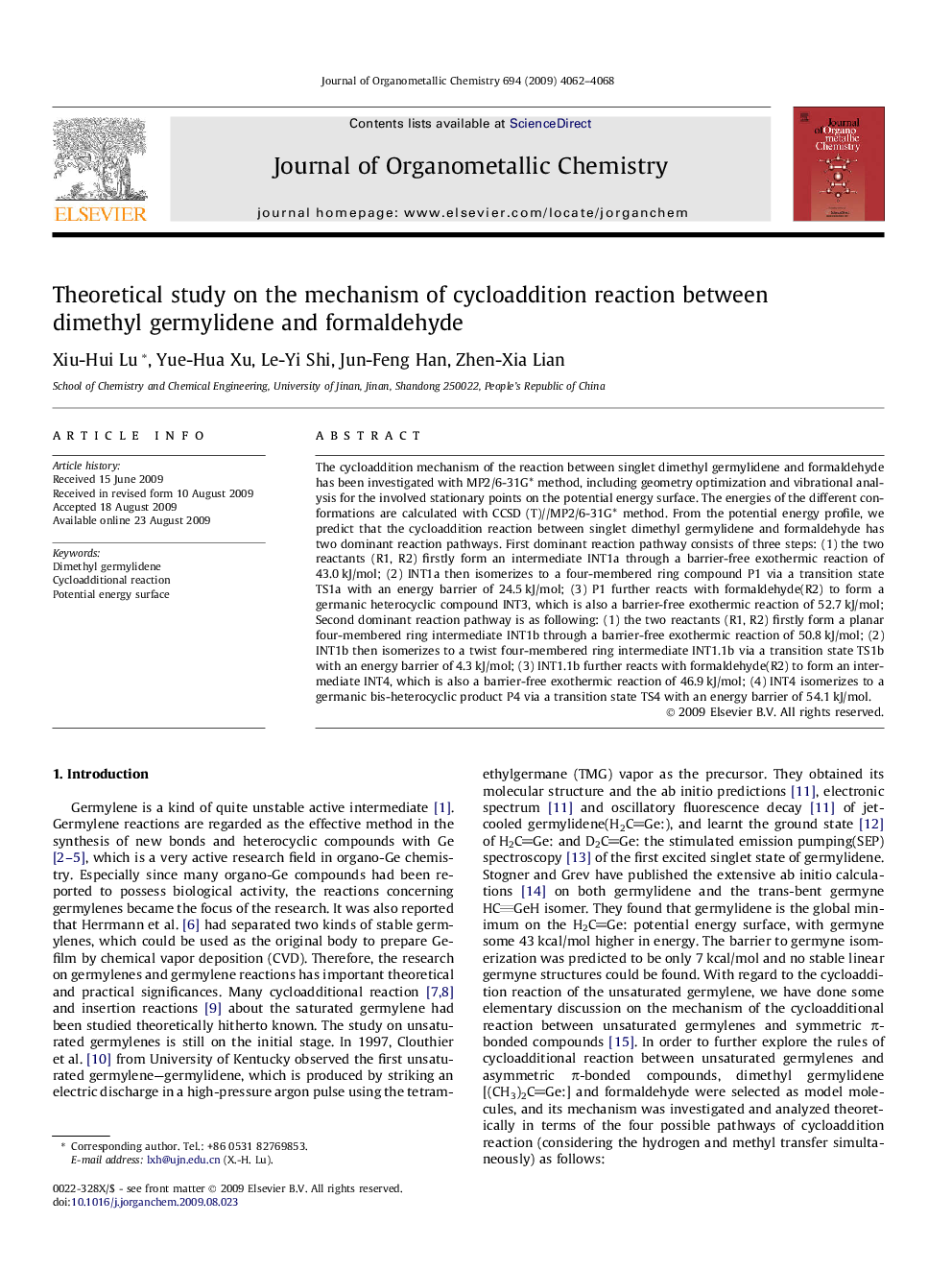| Article ID | Journal | Published Year | Pages | File Type |
|---|---|---|---|---|
| 1324370 | Journal of Organometallic Chemistry | 2009 | 7 Pages |
The cycloaddition mechanism of the reaction between singlet dimethyl germylidene and formaldehyde has been investigated with MP2/6-31G∗ method, including geometry optimization and vibrational analysis for the involved stationary points on the potential energy surface. The energies of the different conformations are calculated with CCSD (T)//MP2/6-31G∗ method. From the potential energy profile, we predict that the cycloaddition reaction between singlet dimethyl germylidene and formaldehyde has two dominant reaction pathways. First dominant reaction pathway consists of three steps: (1) the two reactants (R1, R2) firstly form an intermediate INT1a through a barrier-free exothermic reaction of 43.0 kJ/mol; (2) INT1a then isomerizes to a four-membered ring compound P1 via a transition state TS1a with an energy barrier of 24.5 kJ/mol; (3) P1 further reacts with formaldehyde(R2) to form a germanic heterocyclic compound INT3, which is also a barrier-free exothermic reaction of 52.7 kJ/mol; Second dominant reaction pathway is as following: (1) the two reactants (R1, R2) firstly form a planar four-membered ring intermediate INT1b through a barrier-free exothermic reaction of 50.8 kJ/mol; (2) INT1b then isomerizes to a twist four-membered ring intermediate INT1.1b via a transition state TS1b with an energy barrier of 4.3 kJ/mol; (3) INT1.1b further reacts with formaldehyde(R2) to form an intermediate INT4, which is also a barrier-free exothermic reaction of 46.9 kJ/mol; (4) INT4 isomerizes to a germanic bis-heterocyclic product P4 via a transition state TS4 with an energy barrier of 54.1 kJ/mol.
Graphical abstractThe potential energy surface for the cycloaddition reactions between dimethyl germylidene and formaldehyde with CCSD (T)//MP2/6-31G∗ method. On the basis of the potential energy surface, we can predicted reactions (3) and (4) is dominant reaction pathways of the cycloadditional reaction between singlet dimethyl germylidene and formaldehyde.Figure optionsDownload full-size imageDownload as PowerPoint slideFigure optionsDownload full-size imageDownload as PowerPoint slideFigure optionsDownload full-size imageDownload as PowerPoint slideFigure optionsDownload full-size imageDownload as PowerPoint slide
